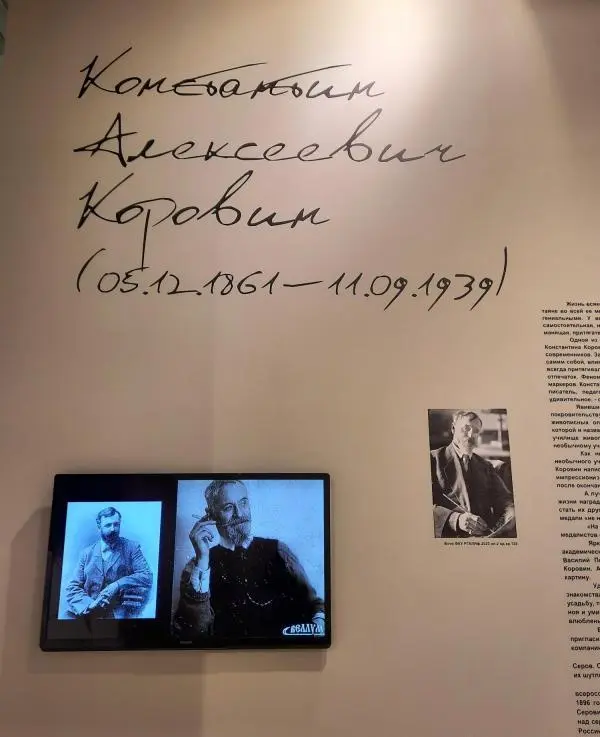He studied in private studios in Paris (1905), SHPU (1905-07), in MUZHVZ (1907-09) at V. A. Serov and K. A. Korovin. He taught at the Moscow GShM-higher art-Vhuteine (1918-29). The member of associations "World of art", "Donkey's tail", "Makovets", the hen, the founder of the Association "Shop painters". On the formation of a kind of creative method of Shevchenko, which he called "tectonic primitivism", was influenced by his fascination with the art of P. Cezanne and at the same time Russian icons and popular prints. His landscapes, still lifes, genre scenes, 1910's-early 30-ies of the inherent monumentality of composition and generalized forms, ramitana linearity, the sparseness of pictorial language ("Sleeping boy", 1919, state Tretyakov gallery; "Landscape with washerwomen", 1920, "still life with lemons and a teapot", 1930, "Kurdish", 1932-33, - all in the timing). Since the second half of the 30s turned (mostly in landscapes) to a more free painting style.
Was born in Kharkov on 12 may (24) may 1883 in the family of a commercial employee. In 1890-1898 he studied drawing in real school and took private lessons in fine art. After his family moved to Moscow (1898) attended the Stroganov school of industrial art (1898-1908). Perfected craftsmanship at the Paris Academy of R. Julien and E. Carrera (1905-1906) and at the Moscow school of painting, sculpture and architecture (1908-1909), where among his teachers were A. Arkhipov and K. A. Korovin. Was the participant of exhibitions "World of art", "Donkey's tail", "Union of youth", "Makovets", "Society of Moscow artists". Designed in 1915, in the army, he served in Belarus and Lithuania, and was discharged in 1917. Lived mainly in Moscow.
Started with impressionism (landscapes, Paris 1905-1906) and symbolist fantasy in the spirit of "Blue rose" (Women at the pond, watercolor, gouache, 1908-1910, Museum of fine arts named after A. S. Pushkin, Moscow). Wrote paintings in a futuristic spirit (Musicians, 1913, Russian Museum). After experiencing the powerful influence of M. F. Larionov, joined with primitivism, with its ironically cunning motives of the lubok and the painted signage (Vivacy still life. Wine and fruit, the Tretyakov gallery, the Woman in the mirror, Russian Museum; both works – 1913). In 1913 he published a pamphlet of Neo-primitivism. His theory. The Principles of cubism and other modern trends in painting of all times and peoples. The first of these publications is a detailed Manifesto about the need to restore distorted academic traditions through the artistic synthesis of the archaic with the modern. Developing this postulate in the second book, innovative approached to art history, drawing attention to a timeless and "eternal" properties of avant-garde shapes. Came close to irrelevance – a Radiant composition "1914" (1914, Art gallery, Perm), shapes and letters under the lightning strikes scattered, turning into the primordial chaos), but in the end remained faithful to figurative art.
After the 1917 revolution he headed the literary-artistic sub-division of the Collegium on the arts of Narkompros (1918-1921), he taught at the Free art studios (VKhUTEMAS; 1918-1929), took an active part in the work of the Russian Academy of artistic Sciences and the creation of the Museum of painterly culture. In the Manifesto "Tsvetodinamos and tectonic primitivism" (prepared jointly with A. V. Grishchenko and published in the catalogue for the eponymous exhibition; 1919) rejected the "prikladnala of all births and referrals" (i.e., clean design, which involved the most radical of the innovators of the type of V. E. Tatlin), defending a dynamically scenic easel painting as the most relevant to our time kind of creativity.
At the end of the 1910s-1920s that "tsvetodinamos" Shevchenko is gradually becoming a more traditional-style properties, combining acute avant-garde sensibility to the beautiful texture with the poetics of romanticism (a simple explanation of landscapes and still lifes; an old Ironing woman; Cyrano Brothers-jugglers; both works – 1920, Russian Museum). Over the years his art has again increased the features of symbolism, but in a new, more generalized, monumental appearance. These are, in particular, muted in color, its an epic figure compositions, created by creative impressions of trips to the Caucasus and Central Asia (Kurdish, 1932-1933, Russian Museum; the Farmers waiting for the train, 1933, Tret gallery; a Night in the port, 1935, Russian Museum). In later decades, was repeatedly critical ostracized as "formalist", but stoically continued to work as a painter, creating lyrically brooding landscapes and genres in the spirit of "quiet art" (Zimka, 1942-1943, private collection, Moscow). Never left teaching primarily in the Textile Institute, where from 1941 he headed the Department of painting.
Shevchenko died in Moscow on 28 August 1948.
-
Le opere sono piaciute a32 users
- Artworks in 2 collections and 42 selections
Mostre
Tutte le mostre dell'artista
















